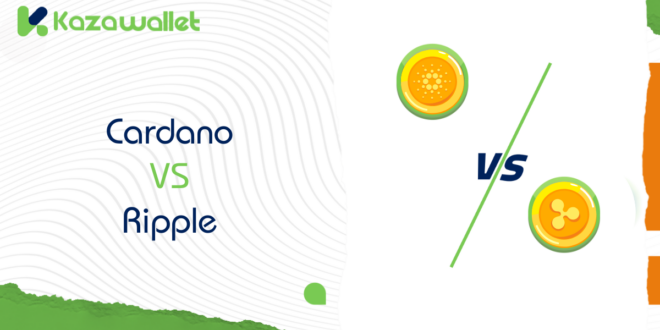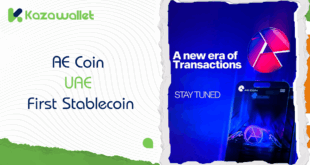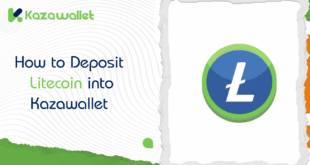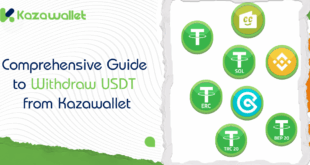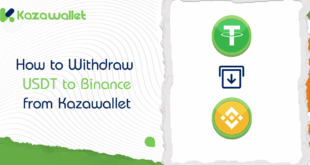Cardano and Ripple, although both digital currencies, have a different mission, technology, and audience that set them apart from one another.
This article is not a straightforward Cardano vs Ripple comparison or a superficial review; rather, it explores Cardano vs Ripple and the differences between Cardano and Ripple in different factors that make each of these currencies unique in its own way.
What is Cardano?
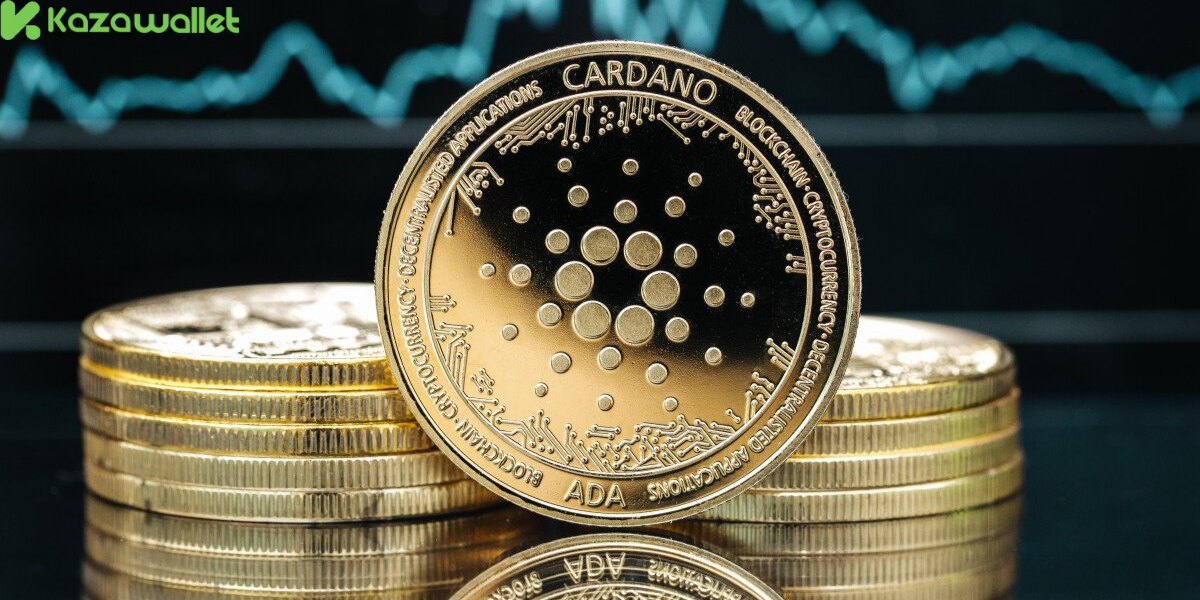
Cardano (Cardano) is an advanced blockchain platform launched in 2017 by Charles Hoskinson, one of the key contributors to the development of the Ethereum platform.
The project was not envisioned as a simple digital currency but as a complete ecosystem to enable decentralized applications (dApps) and smart contracts with a focus on building a secure, scalable, and sustainable environment.
Cardano relies on a new blockchain technology, Ouroboros, the first proof-of-stake-based consensus algorithm, as opposed to Bitcoin, which relies on Proof of Work. T
he algorithm makes Cardano more energy efficient and with a smaller environmental impact, thus being more eco-friendly compared to traditional platforms.
Cardano has a native cryptocurrency called ADA that is used on the platform for transactional purposes and rewards.
Bitcoin vs Cardano: Which is Better for Investment?
What is Ripple?

Ripple (Ripple), also named XRP, is a cryptocurrency developed by Ripple Labs in 2012. Ripple is different from other cryptocurrencies like Bitcoin and Ethereum as it doesn’t employ conventional blockchain technology but another system called Distributed Ledger Technology (DLT) and a proprietary consensus mechanism for validating and recording transactions.
XRP is primarily used on a global payments network known as RippleNet, a network intended to facilitate financial transfers between banks and financial institutions globally.
XRP is notable for having breakneck transaction speeds, finishing a process in 3 to 5 seconds—significantly faster than other digital currencies or even conventional financial networks.
Additionally, the cost of processing transactions on the Ripple network is extremely low compared to conventional financial networks, making it an attractive option for cross-border transfers.
Bitcoin vs Ripple: Which is Better for Investment?
Cardano vs Ripple: The Differences Between Cardano and Ripple
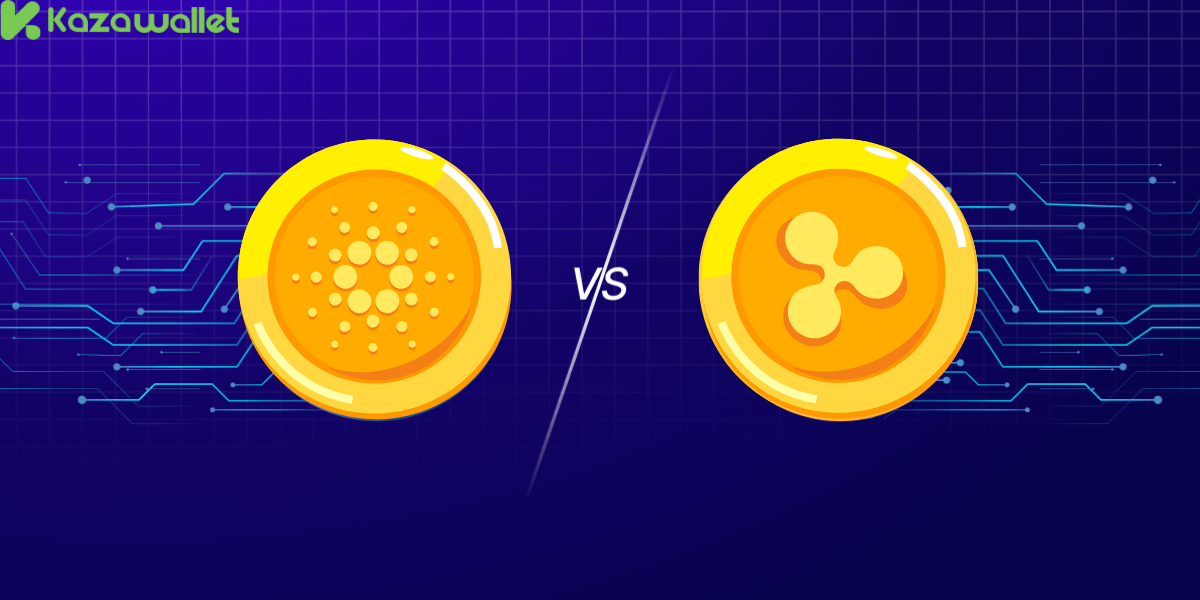
Primary Purpose
While Cardano seeks to develop a vast ecosystem based on decentralization and offers innovative services like smart contracts, Ripple focuses on delivering real-world solutions to real-world problems in the current global financial system.
Stability
Cardano has long-term stability because of its scientifically driven approach. Ripple, however, relies on the stability of cooperation with large financial institutions and is, therefore, more vulnerable to economic and regulatory risks.
Technology
One of the differences between Cardano and Ripple is that Cardano utilizes advanced blockchain technology, including the Proof of Stake algorithm known as Ouroboros, which reduces energy consumption and increases security. Ripple, however, employs its own protocol known as the Ripple Protocol Consensus Algorithm (RPCA), which facilitates quick transaction confirmation without the necessity of mining.
Usage
Cardano is utilized primarily for smart contracts and decentralized apps and, thus is suitable for individuals who desire greater liberty in digital transactions. Ripple is centered mainly on companies that need fast and efficient cross-border money transfer systems.
Supply
One of the differences between Cardano and Ripple is that the number of ADA coins is very limited, which aligns with the concept of scarcity. There are approximately 100 billion XRP coins, though, and most were generated from the start, leading to some inflation concerns.
Decentralization
Cardano is a fully decentralized platform upon which decisions are made by the developer and user community. Ripple, however, is controlled centrally by Ripple Labs, which also possesses a large proportion of XRP, making it less decentralized than Cardano.
Adoption and Reach
Ripple is far ahead in this area, with partners including numerous big banks and financial institutions. Cardano, on the other hand, is still in the process of building its community and expanding step by step.
USDT vs Ripple: A Comparison of Risks and Stability
Cardano vs Ripple: Risks involved
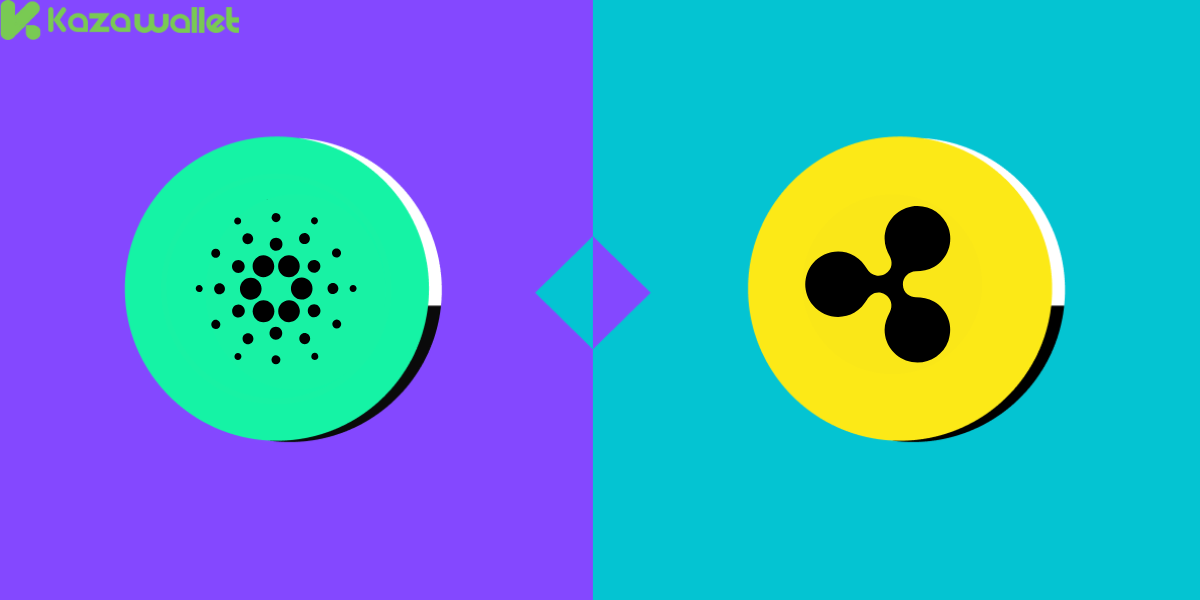
Risks Associated with Cardano (ADA)
- Market Volatility: The price of ADA, like any digital currency, is influenced by various factors, including project-related news such as updates or strategic partnerships, as well as general developments in the cryptocurrency market.
- Scalability: Although Cardano aims to address scalability issues, its success in this area is not guaranteed. The network may face difficulties handling large numbers of transactions simultaneously, leading to higher fees or slower execution, negatively impacting user experience and adoption.
- Security: Despite using the Proof of Stake mechanism, which is considered safer and more sustainable, the network is not entirely immune to attacks.
- Regulation: Digital currencies, including ADA, lack clear regulatory frameworks in many countries. Changes in laws or regulations could impose strict restrictions on the use of ADA or even ban it outright in certain regions.
- Market Risks: Cryptocurrency markets are known for market bubbles, where prices rise sharply before crashing suddenly. ADA could be susceptible to such bubbles, exposing investors to significant losses. Moreover, ADA’s price is directly influenced by supply and demand dynamics.
Risks Associated with Ripple (XRP)
- Legal Issues: Ripple Labs faces a lawsuit from the U.S. Securities and Exchange Commission (SEC) for selling XRP as an unregistered security. If Ripple loses the case, XRP could be classified as a security, limiting its use and negatively affecting its value.
- Centralization: Ripple is centrally managed by Ripple Labs, making it less decentralized compared to other digital currencies. Any issues or mismanagement by the company could directly impact the currency’s value and investor confidence.
- Market Volatility: XRP is not a stable currency, and its value is subject to market fluctuations. This means investors could face significant losses if their value drops unexpectedly.
- Dependence on Banks and Financial Institutions: Ripple’s success heavily depends on its adoption by banks and financial institutions through RippleNet. The failure of these partnerships or the emergence of competitive alternatives could reduce demand for XRP, thereby lowering its value.
- Competition: XRP faces intense competition from other digital currencies and technologies aiming to improve global payment systems.
In conclusion:
Cardano and Ripple represent two very different visions for the future.
While Cardano may be the more suitable option for individuals who seek greater freedom in digital transactions, Ripple offers itself as a high-performance tool for enterprises seeking high operational efficiency.
Regardless of the choice you make, be sure to use secure wallets such as Kazawallet to protect your money, support two-factor authentication, and avoid non-regulated exchanges.
 Blog Kazawallet
Blog Kazawallet
